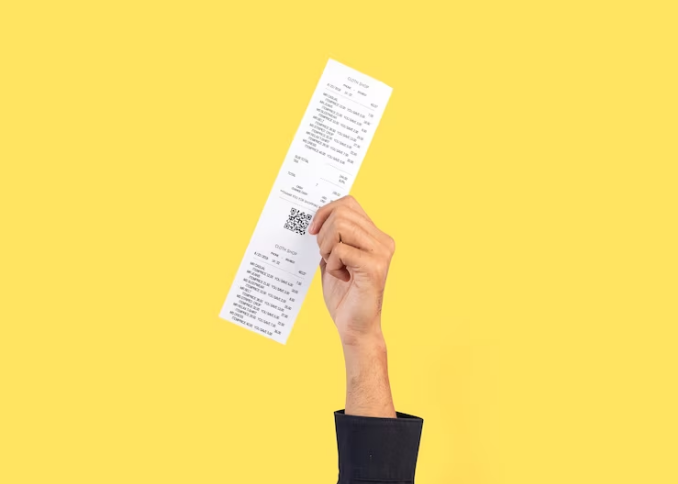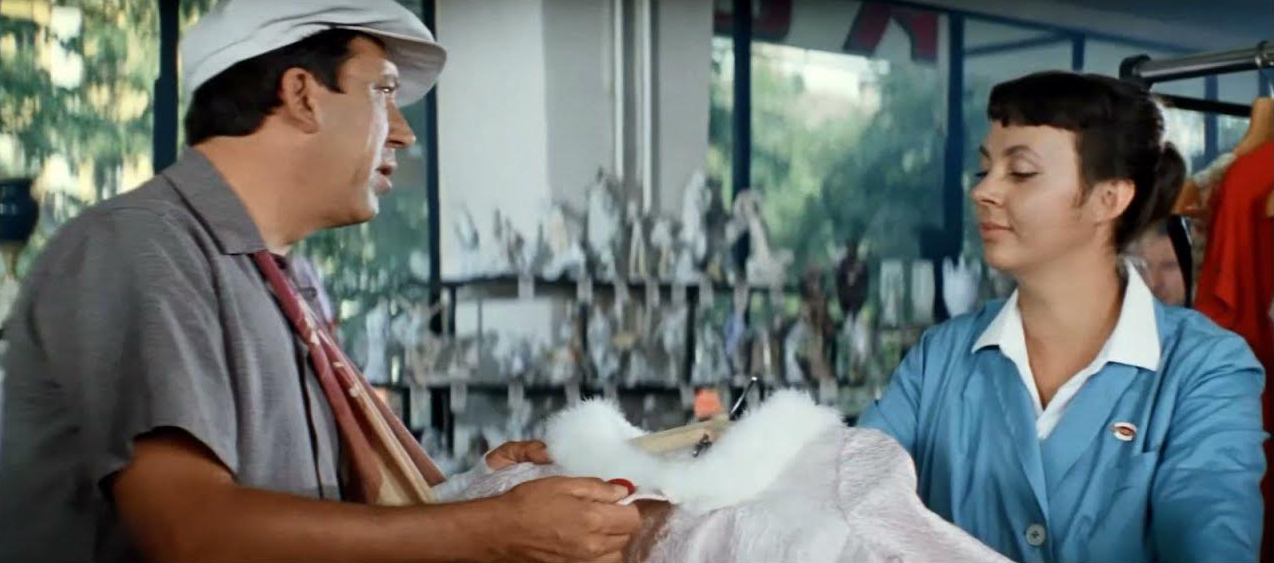Why do customers return goods in an online store and how to process a return?
-
Sergey Berezin
Copywriter Elbuz
Welcome to the world of online store returns, where you can return everything to its original place with just one click. In this article, we will look at why customers decide to make returns and how to properly process returned orders. Build your business on the right principles, learn how to ensure customer satisfaction and build trust in the online world. A fascinating journey into the world of returns awaits you, full of important lessons and practical advice. Don't pass up this opportunity - keep reading and expand your horizons!

Glossary
- Product return is a process in which a buyer returns a product to an online store for various reasons, such as defects, poor quality or simply unsuitable goods.
- Online store - an electronic platform where customers can purchase goods and services via the Internet.
- Distance trading is a form of trading in which goods and services are purchased and sold virtually, without the physical presence of the seller and buyer.
- General trade - trade that occurs through physical stores where customers can inspect and purchase goods on the spot.
- Defective goods - goods that are defective, broken or do not meet specified quality requirements.
- Goods of good quality - goods that meet the specified quality requirements and have no defects.
- Refund - a process in which an online store returns money to the buyer for a returned product.
- Return of similar goods - a process in which an online store replaces a returned product with a similar one.
- Return processing is a process in which the buyer submits a request to return a product, indicating the reason for the return and the necessary details.
- Returned item - item that the buyer returned to the online store.
- Protect yourself from returns - taking steps to reduce the number of product returns, such as providing detailed information about the product, its characteristics and sizes.
- Return Terms - rules and policies that govern the process of returning goods in an online store and determine when and how a return can be made.
This glossary provides definitions for key terms used in the article "Online Store Returns: Understanding Why Customers Return Products and What to Do About It." It will help the reader better understand the text of the article and become familiar with key concepts related to returning goods in an online store.
Reasons for returning goods in an online store
Welcome to the world of online trading!
I have been doing online business for a long time and decided to share with you my experience and knowledge about returning goods in online stores. As you know, shopping online has become an incredibly popular and convenient option for many people. However, not always everything goes smoothly, and buyers return goods. In this section, I will share with you the reasons for returning goods and provide tips for processing returned orders.
Why do customers return products?
1. Unsatisfactory product quality
Product quality is one of the most common factors why customers decide to return a product. And we're not just talking about manufacturing defects or damage during transportation - that's just part of the problem. The buyer may be disappointed if the product does not meet his expectations in terms of quality or functionality. It is important to offer the consumer a high-quality product and strictly monitor the product line to avoid possible problems.

2. The difference between expectations and reality
The Internet is an amazing tool, but sometimes customers are faced with the difference between what they see in a photo or read in a product description and what they actually receive. Perhaps the color or size is not what the buyer expected, causing disappointment. Greater care should be taken to accurately describe the item and use high-quality photographs to reduce the likelihood of discrepancies.
3. Delivery errors
In some cases, the reason for returning a product is an error during its delivery. An incorrect item, damage or even loss during delivery can all cause dissatisfaction with the buyer and lead to him abandoning the purchase. It is important to regularly train staff to reduce the likelihood of delivery errors and develop an effective complaints handling system.

4. Insufficient detailed information about the product
Buyers do not always have enough information about the product to make an informed choice. The lack of a detailed description, reviews or video reviews may be the reason for returning the product. It is important to provide complete and reliable information about the product so that the buyer can make the right decision and avoid dissatisfaction.
5. Sizing or Model Errors
Sizing or model errors are another common reason for returned items. This is especially true for clothing and shoes. It is important to provide detailed sizing charts and selection instructions to reduce the likelihood of buyer error.

6. Insufficient financial condition of the buyer
The reason for returning a product is not always related to the product itself , sometimes the buyer simply cannot afford to pay for the order. Changes in your financial situation may result in a reduction in costs and the item must be returned. It is important to provide the buyer with the opportunity to return the product without additional difficulties and high fees.
Now that we understand the reasons for returning goods, let's discuss what to do with returned orders.
Processing returned orders
1. Fast and efficient refunds
It is important to be prepared to refund the customer as soon as possible as soon as possible. The faster a customer gets their money back, the more likely they are to shop from your store again. Develop clear return procedures and equip your customer support team with all the necessary tools to quickly process returned orders.

2. Offering Alternatives
When an item is returned, this can be a good opportunity to offer alternative options or replacement of goods to the buyer. In this case, it is necessary to listen carefully to the wishes of the buyer and help him choose the appropriate option. Make it as comfortable and profitable as possible for the buyer.
3. Analysis of reasons for returns
Do not forget to analyze the reasons for returning goods in order to minimize their occurrence in the future. Pay attention to customer feedback, investigate the reasons, and develop strategies to prevent repeat returns. Strive to improve quality control systems and ensure high customer satisfaction.
4. Improving the order process
One of the most effective measures to reduce the number of returned orders is to improve the ordering process. Make it as simple and intuitive as possible for the buyer. Consult via online chat, offer recommendations and help the client make the right choice. This will help reduce order errors and increase customer satisfaction.

5. Using thank you notes
Don't forget to thank your customers even if the item is returned. Send thank you notes acknowledging and understanding the reasons for the return and confirming that you are willing to help in the future. Strive to create a friendly and supportive environment, even if the customer decides to return the item.
Benefits:
- Fast and efficient refund to the client.
- Suggestion of alternative options.
- Analysis of reasons for return.
- Improved ordering process.
- Using thank you notes.
Returns of goods in online stores can be caused by various reasons, and it is important to prepare for such situations. Return orders must be processed quickly and efficiently, and offer alternatives or replacements. Analyzing the reasons for returns will help improve the process and prevent recurrences. It is also important to improve the ordering process to reduce errors and increase customer satisfaction. Remember to thank customers, even if they returned an item, and strive to build trust with customers.
"Returning goods in an online store is an integral part of distance selling. It is important to understand the reasons for returns and take measures to prevent them." - Kristin Phelps, Amazon Expert.
"Competent processing of returned orders "This is the key to maintaining a good reputation and customer satisfaction." - Dwayne Ball, eBay.
In this section, we looked at the main reasons for returning goods in online stores and gave recommendations for processing returned orders . It's important to remember that every situation is unique and you need to tailor your approaches and strategies to suit your business. I hope that my experience and advice will be useful to you and help you improve your return order processing process. If you have any questions or comments, please leave them below and I will be happy to answer them. Good luck in your business!
Links for additional information:
Returning goods in an online store: my own experience and advice
During my work as an online entrepreneur, I have encountered many cases of product returns. I want to share with you my personal experience and tell you why customers return goods to online stores, as well as share tips for processing returned orders.

How does online trading differ from regular trading? For example, you can order cosmetics without leaving your home, but buying via the Internet is not always convenient - you cannot inspect, touch and evaluate the product directly. Therefore, a customer who does not receive what he expected or has doubts about the quality of the product may decide to return it.
Many customers return products for various reasons. Perhaps the product turned out to be different from what was described on the website: the color is different, the size is not suitable, or the material causes allergies. Sometimes buyers change their minds or simply change their mind after a purchase. Additionally, some scammers may intentionally order products with the intention of returning them after use. Perhaps they need to quickly use the product, for example, for one event, and then return it and get a refund.

It is important to understand that product returns are an inevitable part of business. While returned products can be frustrating for online store owners, properly handling returned orders can be a strength for your business and can impact customer confidence. How to properly process returned orders?
Start by thoroughly inspecting your returned item. Make sure it is in the same condition it was sent in. Use a damage detector to ensure that the item has not been used or damaged. If the product shows any signs of use or damage, these should be documented and appropriate action taken.
Process refund requests promptly. Constantly monitor your company's inbox and respond to customer requests as quickly as possible. Buyers value responsiveness and efficiency, so the sooner you resolve issues with returning goods, the better.
Try to satisfy the customer. If a customer returns an item for reasons that are easily corrected or addressed, offer them alternatives or a refund. This may include offering a discount on the next purchase or offering to replace the product with a similar product that will exactly meet the customer's expectations.
Analyze the reasons for returns. Keep statistics on the reasons for returning goods and use this information to implement changes in your business process. If you notice recurring reasons for returns, this may be a sign that you need to change product descriptions, improve service quality, or take other steps to reduce the number of returns in the future.
Returning goods in an online store is a normal phenomenon that you need to be able to work with. Providing quality customer service and properly handling returned orders can be key to the success of your business. Additionally, look for return reasons that can be addressed proactively to prevent customer dissatisfaction and increase trust.
Important things to do:
- Check returned items carefully
- Process requests return promptly
- Satisfy customers and seek compromises
- Analyze the reasons for product returns
What to avoid:
- Postpone processing of refund requests
- Purely formally familiarize yourself with the client's problem and return the money
- Ignore repeated reasons for returning
Results:
- Returning goods is an inevitable part of online trading, and rightly so processing returned orders can increase customer confidence.
- To best process your item return:
- Carefully inspect the returned item for damage and use.
- Respond to return requests promptly.
- Try to satisfy the customer by offering alternatives or refunds.
- Analyze the reasons for returns and take measures to prevent them.
All this information is based on my personal experience in online trading. I believe that properly handling returned orders can help you build a successful business, maintain customer trust, and increase satisfaction levels.
I believe that product returns are not just a problem to solve, but an opportunity to better understand customer needs and improve your business.
I hope my tips help you deal with returns and succeed in online retailing!

Why do customers return goods?
Often, when customers make a purchase in an online store, they do not always receive what they expected. Why do returns occur and what can we do about it?
My experience in an online store shows that the main reasons for returning goods are the following factors:
1. The product is defective, broken, of poor quality
It happens that the product arrives to the buyer in a defective condition. The reason may be insufficient inspection of the goods on our part or damage incurred during transportation. In this case, the buyer has the right to return the goods back, and we do not put obstacles in his way.
We respect the rights of customers and are always ready to solve the problem of returning goods. If the product is defective, broken or not of proper quality, we are obliged to accept it back and refund the buyer's money.
2. Unsatisfactory quality of the product
Sometimes buyers do not like the product, despite the fact that it is of adequate quality. For example, the product may not be the right size, the color may not be what you expected, or the product may look different in the photo than in reality. We have all encountered such funny situations when reality does not meet our expectations.

In online stores you can return goods without explanation within a certain time. According to the Consumer Protection Law, the buyer can return goods of proper quality in the following cases:
- If he has not yet received the goods, that is, at any time from the date of order.
- If no more than a week has passed since the receipt of the goods.
- If no more than three months have passed and you have not warned the buyer in writing about the return policy in your online store.
I believe it is important to take into account these rules and provide customers with the opportunity to return a product of proper quality, no questions asked.
Review of product return practices:
| What to do | What not to do |
|---|---|
| About accepting goods with defects and defects | Hide information about return rules |
| Accept the product back without obstacles | Set conditions that do not comply with the law |
| Refund or offer an exchange of goods | Ignore the problem with returning the goods |
And remember that the quality of your online store will be assessed by how you solve the problem of returning goods.

In the next section, I will discuss how to handle returned orders to improve our service and meet the needs of our customers.
Returning goods in an online store: how to place and process returned orders
I'm sure many of you have encountered with a situation when, after purchasing a product in an online store, there is a need to return it. Why do customers return goods, and how to properly process returned orders? In this chapter, I will share my tips and talk about my experience in this field.
First of all, I would like to note that returning goods in an online store is not always possible. There are certain conditions that the buyer must meet in order to receive a refund or replacement of the product.
One of the main conditions is to preserve the appearance and consumer properties of the product. This means that the buyer must return the item in perfect condition, without signs of use or damage. For example, worn clothes cannot be returned. It is also important to keep all labels and tags on the goods, as well as have other documents confirming the fact of purchase, such as receipts or invoices.

If all return conditions are met, the online store must return the buyer’s money or offer a replacement product. However, if the buyer does not have a receipt, you can ask witnesses to confirm the fact of the purchase.
It should be noted that online stores can set their own return policies. For example, some stores may not accept returns on certain product categories, such as lingerie or cosmetics. Therefore, before making a purchase, it is recommended that you carefully read the return policy of this store.
One of the important aspects of processing returned orders in an online store is the speed and quality of service. The buyer should receive a response to his request as quickly as possible, and the return process should proceed without problems or delays.
I personally have developed and applied a number of approaches that have helped me cope with the problems of returning goods in an online store. First, I always carefully study the return policy before making a purchase. This allows me to avoid troubles and conflicts if I need to return the goods.
Secondly, I try to process the returned order as efficiently as possible. I keep all documents and receipts, as well as packaging safe and sound. This allows me to be confident in the positive outcome of the return.
Finally, it is important to have an open and friendly approach when processing returned orders. I always try to be understanding and ready to help the buyer solve the problem. This allows me to establish trusting relationships with clients and maintain the image of a reliable seller.

Returning goods in an online store can be a difficult task for both the buyer and the seller. However, following the rules and properly processing returned orders can make the process smoother and safer for all parties.
Finally, I would like to share with you a summary table that will help you better understand how to correctly process your returned order and return outcome:
| Things to do | Things not to do |
|---|---|
| Maintain the appearance and packaging of the goods | Accept used clothing or damaged goods |
| Save all purchase documents | Accept goods without a receipt or other documents |
| Process returns quickly and efficiently | Take a break from processing returned orders |
| Be open and friendly in communication | Lead conflict discussions with customers |
I hope that my tips and tricks will help you successfully deal with product returns in your online store. If you have additional questions or would like to learn more about this topic, I invite you to review our articles on the site, including the article "How to Recognize a Fraudulent Buyer."
Remember that successfully processing returned orders is a key element to satisfying customers and maintaining a good reputation for your online store. Be attentive to customer needs and diligently solve problems that arise. Good luck with your sales and loyal customers!

How to properly process a return
Before In all, I want to share with you my personal experience of returning goods in online stores. Often we order something online, relying on descriptions and photos on the site. However, it is worth recognizing that even the most conscientious sellers sometimes make mistakes, or the product may turn out to be of poor quality. Thus, returning a product is one of the integral stages of online shopping that both customers and sellers face.
Returning a product of inadequate quality
If you receive a product that is defective, broken, or does not perform its functions, you certainly have the right to demand its replacement or even a refund . For example, if a dress is missing a button, you can claim a discount based on the defective item. It is important to remember that returns of inadequate quality must be made no later than 10 days from the date of receipt of the request from the client.
When returning such an item, you have several options. Firstly, you can request that the product be replaced with a similar one at the same price. If this option is not possible, then you can ask for another product, taking into account the recalculation of the cost. Secondly, you can also ask the seller to eliminate the defects or pay you an additional amount to fix the breakdowns yourself. Finally, you have the right to demand a full refund for the product.

Certain difficulties may arise if the product is technically complex, for example, household appliances or electronic gadgets. In this case, you are given only two options - return the money or exchange the product for a similar one, or at a different price with appropriate recalculation.
It is important to note that you can deliver the goods personally or send them by mail, depending on your convenience.
🔍 Returning goods of inadequate quality is your legal right. Try to consider all replacement or refund options and choose the one that suits you best.
Refunds
In the event that a customer insists on a refund for an item, you must follow certain rules. Regardless of whether the product is of adequate or inadequate quality, the money for it must be returned no later than 10 days after receiving the request from the client.
Usually only the cost of the product itself is refunded, minus the shipping amount. For example, if a client wants to return a dress for 3,000 hryvnia, but sends it by parcel, you must return only the cost of the dress, not including shipping costs.
Methods for returning funds depend on how payments were made. If the purchase was made using a bank card, you simply return the money to the buyer's card. It is important to remember that cash refunds should be avoided in this case. If payments were made in cash, you should return the money to the buyer from the cash register. In this case, you can issue a return certificate or be guided by a written statement from the client. If payments were made using electronic money, such as WebMoney, Google Pay or QIWI wallet, the easiest way would be to credit the refund amount to the buyer’s personal wallet.
.gif)
🔍 Refunding is a responsible and important step. Try to use the return method that is most convenient and safe for you and the client.
Returning a similar product
In the event that the buyer wishes to receive another product in exchange, you must send it by the same or another convenient method indicated on your website. However, sometimes situations arise when a similar product is no longer available. In this case, with the consent of the buyer, replacement may be postponed until the goods go on sale.
🔍 You should give the buyer the opportunity to choose another product to replace it.
What to do with the goods sent back?
The buyer can return the product he doesn’t like in any way convenient for himself. In this case, you should issue an invoice sheet in two copies. One of them must be attached to the goods report, and the other must be given to the buyer as a basis for receiving money.
🔍 It is important to process your return correctly to avoid misunderstandings.

In conclusion, I would like to emphasize that product returns are an integral part of the interaction between customers and the Internet. shops. Each stage of the return must be carried out in accordance with the rules and legislation, as well as taking into account the convenience of both the customer and the seller. I hope the information provided is helpful and helps you successfully process your returned orders.
How to protect yourself from returns
When I launched my online store, I was faced with the problem of frequent product returns . Initially, I thought that this was a common practice and that I would have to accept the losses. However, I decided to carefully study this problem and find ways to prevent it. Today I want to share with you my experiences and tips for protecting against returns.
The first step I took was to study the law and carefully follow all its points. I have carefully read the legislation on product returns and learned about the rights of buyers. This allowed me to create a detailed description of the products on the site to eliminate doubts and questions from buyers. I took photos of the product from all angles, made video reviews and talked about the properties and functions of each product. This approach helped reduce the number of returns of goods of good quality.

The second step was to find reliable suppliers and purchase only quality goods. I did market research, read reviews of various suppliers and chose only proven and reliable ones. This allowed me to avoid selling products with defects and flaws and maintain the reputation of my store.
The third step was to develop a provision for the return of goods. While the law does not prescribe strict requirements, each store can create its own return rules. I defined the main provisions, terms and return procedure, warned buyers about the need to maintain the integrity of the packaging and presentation, as well as receipts and documents. I also included in the rules such items as presenting passport or contact information when returning, filling out a return form and other formalities. This helped scare away scammers who return goods in online stores to make money.
It is important to pay attention to the documentation and documents requested by customers when returning goods. Please carefully review all information and documentation received to ensure that your return complies with your online store's terms and conditions.

You can also reduce the number of returns by paying attention to some specific points in the return policy:
- Write down clear terms and procedures for returning goods.
- Request passport or contact information upon return.
- Please ensure that the return form is completed.
- Warn customers about the need to maintain the integrity of packaging and presentation, as well as receipts and documents.
- Consider returning only if requested documentation is provided.
Pay attention to these aspects in your online store to reduce the risk of returns and protect yourself from fraud.
After all, product returns are a normal practice in online stores. However, with the right approach and attention to detail, you can significantly reduce their number. I hope my tips will help you protect yourself from returns and effectively process returned orders.
"Once you have developed your return policy, you should pay special attention to customer documentation. It is important to carefully review the requested documents and information when returning an item. This will help you establish "The return will comply with your terms and conditions. Thus, you can eliminate the possibility of returning goods without the necessary documents and protect yourself from fraud." - Tatyana Yudina, ALLO company expert.
Online stores are constantly faced with the problem of returning goods. Well-designed policies and careful handling of returned orders can help reduce risk and protect your business from loss. By following my tips and recommendations, you can create a reliable system for returning goods in your online store.
Telling the buyer about the return policy
I believe it is important to provide customers with all the necessary information about returning goods online -store. The lack of clear instructions can cause dissatisfaction and conflict situations. In this section, I will share my experience with you and give you some tips for processing returned orders.
Provide written return information
You are required by law to communicate your return policy to the customer in writing. Attach information to your order, send it by email, or simply print it on a receipt or delivery note. If the item is delivered by courier, ask the courier to provide the buyer with a return policy paper for signature.
To be sure of your protection in the event of a legal dispute, draw up such paper in two copies. One copy will remain with you, and the other will be given to the buyer. This will give you proof that the buyer is familiar with the return policy.
Checking the condition of the goods with the courier
If you use courier delivery, I strongly recommend drawing up a transfer and acceptance certificate right at the moment the buyer receives the goods. This will allow you and him to check the product for defects and enter the relevant information into the document. If any deficiencies are found, be sure to notify the buyer about this and clarify his further actions. He may decide to refuse the goods, or he may also confirm that he has no complaints. In any case, such an act will become important evidence in your favor in case of legal disputes.

Efficiency and collaboration
No matter the situation, remember that your strategy must be focused to work effectively, and not to lead a conflict with the buyer. Your task is to provide the best possible conditions for returning goods. Build a trusting relationship with the buyer, listen to his requirements and try to find a mutually beneficial solution.
Being discerning and tolerant will help you process returned orders. Be prepared to offer alternative options if the buyer is not satisfied with the product. Communicate openly with him, ask questions and listen to his opinion.
My experience
Working in the field of online trading, I have encountered various situations of returning goods. I once had a case where a customer refused an order because he received a damaged item. Thanks to careful work and checking the condition of the goods with the courier, we were able to resolve the problem quickly and without additional disagreements. The customer received a refund and was satisfied with our service.
Summary
So, I would like to summarize and offer you an overview of the important points in processing returned orders in an online store:
- Provide return policy information to the buyer in writing.
- Arrange to check the condition of the goods upon courier delivery.
- Strive to work efficiently and cooperate with the customer.
- Use your experience and knowledge to solve problem situations.
I'm sure these tips will help you in processing returned orders and maintaining a good reputation for your online store.
“Providing clear instructions and information about return policies is critical to successful online sales. By following simple practices, you can ensure customer satisfaction and minimize conflict. Remember to always be efficient and collaborative when processing returns and be willing to offer alternatives to keep your customers happy.” - Sharlene Manning, eBay expert.
Frequently asked questions on the topic "Returning goods online -store: we figure out why customers return goods and what to do about it"
- In what cases do customers return goods in an online store?
- Customers may return items if they are defective, not as described, not of satisfactory quality, or do not satisfy the customer's needs.
- What should I do with returned goods in the online store?
- Returned items must be properly handled and inspected for defects. You can then decide whether the item can be resold or whether it should be sent back to the supplier.
- What are the differences between distance trading and regular trading?
- Distance trading is carried out via the Internet, without the personal presence of the buyer and seller. It is based on the description of the product, its photographs and trust in the online store. Regular trade, in turn, takes place in stores, where goods can be seen and touched before purchase.
- Why do customers return goods in an online store?
- Customers may return items because the product in the photo does not match the actual product, because the product description is inaccurate or misleading, or because of incorrect sizing or mismatch product to their expectations.
- Is it always possible to return goods in an online store?
- No, sometimes customers may choose to exchange the item or receive a refund instead of returning it.
- How to properly return a product in an online store?
- To return a product, you must contact the online store support service, indicate the reason for the return and follow their instructions. Usually you need to fill out a special form or submit a request to return the goods.
- How do I get a refund for a returned item?
- Refunds are usually made using the same method used to pay for the order. For example, if the payment was made using a bank card, the money is returned to this card.
- Can I get a similar item when returning it?
- In some cases, the online store offers its customers the opportunity to receive a similar product in exchange for the returned one. However, the availability of such an option depends on the policy of each particular store.
- What should I do with a returned item that has already been sent back?
- After receiving the returned product, the online store must check its condition and, if the product is in good condition, decide whether it can be reused for other customers or whether it should be sent back to the supplier.
- How to protect yourself from possible product returns?
- To reduce the risk of returns, you can provide the most accurate product descriptions, indicating its characteristics, sizes and features. It is also important to provide high-quality photographs of goods so that the buyer can examine the product in more detail.
- How to properly inform customers about the return conditions in an online store?
- It is important to communicate your return policy clearly and transparently, indicating which items are accepted for return, what condition they must be in, and what steps must be taken to process the return.

Thank you for becoming even more experienced!
We have visited the world of returning goods in online stores. You have mastered the intricacies of processing returned orders and learned how to deftly manage this process. Now you are a real professional in this field!
You know how to properly respond to product returns and offer the customer the best solution. And most importantly, you are ready to turn such a situation into an opportunity to strengthen your connection with the client.
You now have the knowledge and skills to effectively process returns and increase customer satisfaction. Your online stores will become even more successful thanks to your confidence and experience.
Don't forget to share your thoughts and impressions in the comments below. I'm always glad to hear your opinion and answer your questions.
Best wishes,
Sergey Berezin Independent expert in Elbuz

- Glossary
- Reasons for returning goods in an online store
- Processing returned orders
- Returning goods in an online store: my own experience and advice
- Why do customers return goods?
- Returning goods in an online store: how to place and process returned orders
- How to properly process a return
- How to protect yourself from returns
- Telling the buyer about the return policy
- Frequently asked questions on the topic "Returning goods online -store: we figure out why customers return goods and what to do about it"
- Thank you for becoming even more experienced!
Article Target
Provide information about returning goods from online retailers and share tips for processing returned orders.
Target audience
Online shoppers, internet entrepreneurs
Hashtags
Save a link to this article
Sergey Berezin
Copywriter ElbuzIn the world of virtual opportunities, I am the mastermind behind the success of online stores. Words are my tools and automation is my magic recipe. Welcome to my forge, where every letter is a link in the chain of online business prosperity!
Discussion of the topic – Why do customers return goods in an online store and how to process a return?
Find out why customers return products in an online store and how to properly process returned orders.
Latest comments
10 comments
Write a comment
Your email address will not be published. Required fields are checked *

















.jpg)










Jane
Wow! Another delivery from my favorite online store. Packaged so beautifully, but what is the reason that people return the goods? What could be the reasons and what is the best way to process orders?
Mark
Yes, items are often returned. I think one of the reasons may be a low-quality product, as well as an incorrect description or photographs of the product on the site. It is important that the store is ready to process returned goods quickly and without problems.
Maria
I agree with you, Mark. Also, some people may simply change their mind or order multiple options and only keep the one they like best. What do you think about this, John?
John
Yes, Maria, I agree. I also had cases when I ordered several sizes of clothes and left only the one that suited me. Returning goods has become easier, but it is still important that the store is ready to accept them back.
Anna
How do stores process returns? What happens to returned items? I worked in a store and returning goods like this sometimes caused problems.
Сергей Берёзин
Great questions! When a store receives a returned item, the first step is to check its condition. If the item is in good condition, it can be returned to the warehouse and sold again. If the product is damaged, the store must decide what to do with it - either return it to the supplier or put it on sale at a discount.
Pierre
I've heard that some stores offer the option of exchanging items instead of returning them. This is a good idea, what do you think, Jack?
Jack
Yes, Pierre, I agree. Exchanging an item may be more convenient for the buyer, especially if they simply want to choose a different size or color. Stores that offer this option are able to retain more customers.
Elena
How can customers be informed about the possibility of returning and exchanging goods? Stores should make this clear and visible on their websites.
Grumpy
Again these useless trends. I just believe people return items because they are lazy and irresponsible. Nothing else.